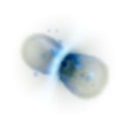Installation instructions
Generalities Once the prerequisite for your system are installed (see below) you can run Shape via the Launch Shape 2010 link on the start page of the ShapeSite. When you click on that link a file named Shape_it.jnlp is downloaded to a temporary folder and is run by Java Webstart. The first time you do that, webstart downloads the Shape code and starts the program. The next time, it will only check whether the code has been updated. If not, webstart runs the local version. Otherwise it downloads and runs the new version. This makes it easy to keep the code up-to-date. If you are going to run complex, memory intensive physical models, then the default memory settings for Java may not be sufficient to achieve a suitable spatial resolution. Then it is recommendable to increase the RAM that Java is allowed to access. Java runs with a certain RAM memory limit, since it is embedded into what is called the Java Virtual Machine. The maximum recommendable memory for that is approximately 1.5 GB for 32 bit processors. The maximum memory to be claimed by Java is set in the Shape_it.jnlp file. If you have more than 2 GB for a 32 bit system, you can manually increase the default maximum memory of 1000 KB to 1500 KB. To do that save the Shape_it.jnlp file on your desktop and open it in a text editor as an ascii file. Change the following code section: max-heap-size="1000M" to max-heap-size="1500M" Similarly, on 64 bit systems you can take advantage of its higher address space to increase the spatial resolution of your models. Increase the max-heap-size to a value suitable for your system, say 2/3 of the available RAM. Now that you have saved and modified the Shape_it.jnlp file, you can run Shape by opening this file with webstart (click or double-click on the file icon). Shape will then open with the new settings. As of October 2010, the Java Advanced Imaging (JAI) and Java Media Framework (JMF) are included directly in Shape. So, you do not have to install them anymore. Since most systems these days already include Java Runtime Environment, you probably only have to install Java3D, which is system dependent. This should be true for all operating systems.
|
||||
Instructions kindly contributed by Laurence Sabin, Instituto de Astronomía, UNAM, Ensenada 2. Fedora 9, NVIDIA video card Installing Java on Linux (http://www.wikihow.com/Install-Java-on-Linux):
Installing Java3D (https://j3d-core.dev.java.net/j3d1_4_0_01/HOW-TO-INSTALL.html)
Installing JAI
You should now be able to run Shape using webstart. If webstart is not installed you will have to download it and install it, but it should be already installed.If you get an error about the GLX version being too low when you try to open the 3d module (or perhaps Shape itself) you will need to install the latest drivers for you video card. Shape used Java3d v1.5 which required Glx > 1.3. Upgrading your video driver varies depending on what video driver you have. If you have an nvidia card you can upgrade using RPM packages. I can only give you the example of my system (Fedora 9, NVIDIA card) in which the following worked:NVIDIA driver upgrade on RedHat/Fedora: (http://www.brandonhutchinson.com/NVIDIA_drivers_with_Red_Hat_Linux.html)
Fedora installation instructions collected by Nico Koning. Please contact me for any help or tips you discover at nkoning@iras.ucalgary.ca
|
|
|||
Here is how I install the required libraries to let Shape run on a macbook: The procedure described above has problems for the most recent systems. Known problems: There may be problems with saving movie files in the Movie Module. Instructions kindly provided by Christophe Morisset.
|
||||
